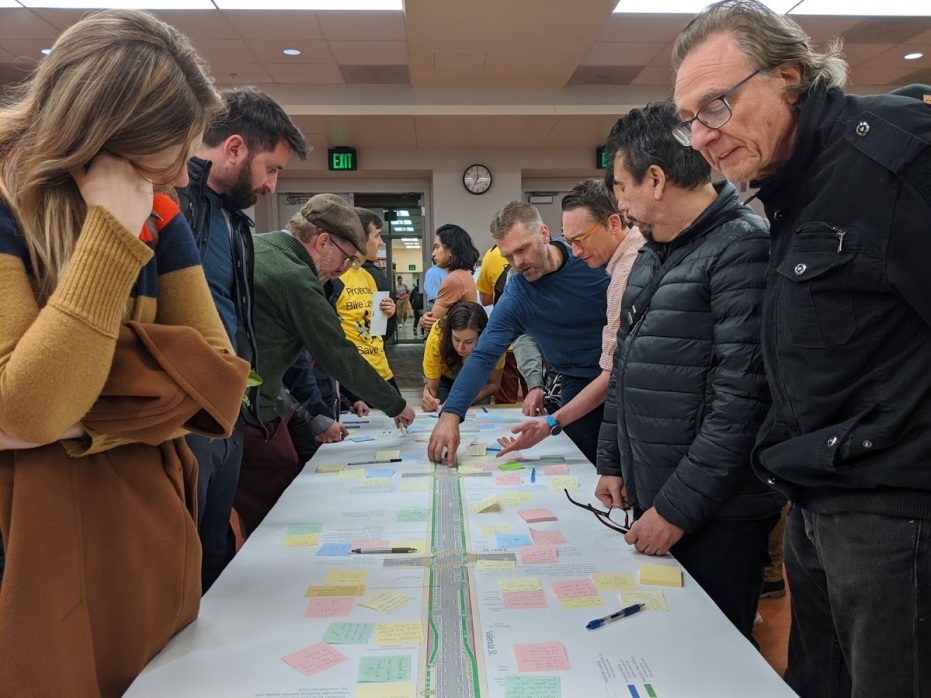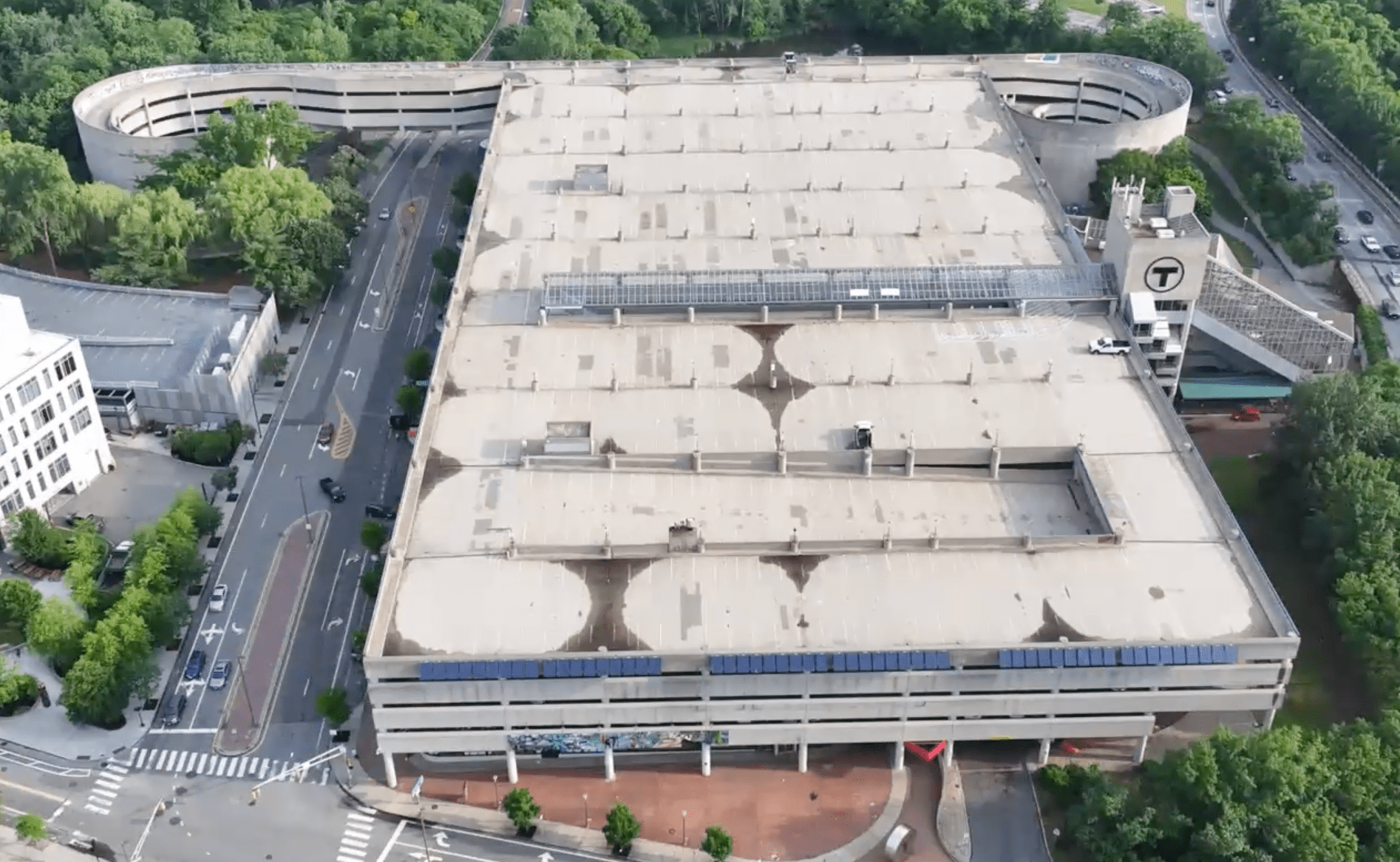This year, Metropolitan Planning Organizations — or MPOs — have taken center stage in transportation advocacy across America. Michiganders got their MPO to cancel a highway expansion plan, St. Louis and Denver MPOs have approved light rail expansions, and the San Francisco Bay Area’s MPO pushed for significantly more funding and oversight to the region’s 27 transit agencies.
Massachusetts has several MPOs, the biggest of which is the Boston Region MPO, which includes 97 cities and towns in eastern Massachusetts. There's also the Central Massachusetts Regional Planning Commission, which covers Worcester and its suburbs, the Pioneer Valley Planning Commission, which includes Springfield, Holyoke, Westfield, and Northampton, and several others.
MPOs are potentially powerful, complicated agencies that shape our transportation system, but they are often less understood than other decision makers.
To help advocates better win changes at MPOs, let’s take a look at what MPOs are, what powers they have, and how you can pressure your MPO to make positive transit, biking, and mobility changes.
MPOs: a simplified look at powerful but poorly-understood agencies
An MPO is an agency created by the federal government to do two primary things:
- Make spending plans for the federal transportation funds that flow into a region
- Allocate that money to different agencies, jurisdictions, and other entities.
Whether that’s money for roads, highways, transit capacity, or transit operations, when the Federal government cuts a transportation-related check, it generally goes to the 400+ MPOs across the country, who then decide more specifically on how that money gets spent in their region.
For example, in President Biden’s Bipartisan Infrastructure Law signed in 2021 there was $30 billion earmarked for “Transportation projects of national, regional and local significance.” What makes a transportation project of “regional and local significance”? That’s for the MPO to decide – often via a competitive grant process.
The federal government does put restrictions on how MPOs can direct funding, but those spending guidelines are fairly loose. Each federal program has its own rules, and there is a complicated web of federal, state, and local policies around transportation issues, but MPOs still have a shockingly large amount of discretion in their planning process. For example, in theory, funds for “improving community connectivity” could go to capping a freeway, removing a freeway, or building a new one; an MPO can decide which route the region will take.
As a regional planning body, MPO’s also have a lot of discretion when it comes to what they plan for and how they plan. For example, the Orlando region’s MPO, MetroPlan, is working on their “2050 Metropolitan Transportation Plan” and one of the indicators of success in that plan is be “Percent of transit trips that arrive on-time,” though there is not a federal requirement to do so.
Because MPOs set their own goalposts of success, they shape the final outcome of a process long before the last vote.
Who runs the MPO?
MPOs are governed by boards of directors. According to Seamless Bay Area’s Policy Director Ian Griffiths, “Federal law requires that MPO boards may have three different types of officials: local elected officials; officials of public agencies that administer or operate major modes of transportation in the metropolitan area, including representation by providers of public transportation; and appropriate State officials. So, in practice, most MPOs are dominated by locally elected officials — but they don’t have to be that way.”
When local elected officials are on MPO boards, though, those boards tend to follow a simple “one town, one vote” structure — which can prove problematic for larger communities.
As Pittsburghers for Public Transit Executive Director Laura Chu Wiens describes their regional MPO, for instance, “the representation from the City of Pittsburgh and the surrounding urban areas on the Commission is dwarfed by the number of commissioners from small city or rural communities. This lopsided political structure yields lopsided funding outcomes: Because every commissioner has an equal vote, large highway projects serving a handful of people can be prioritized as our region’s major funding asks over important transit projects which would serve tens of thousands of residents a day.”
Winning change at your MPO
MPOs are designed to think regionally, so you need to organize regionally to win. Getting the MPO board member who represents your area on board is helpful, but they are only one of potentially dozens of votes. You need to work with allies to get their MPO representatives to do the same, too, and show how your goal helps the region — not just your community.
And to that, it’s critical to apply pressure from the inside and the outside.
“Inside” pressure is anything that is done within the MPO’s official means of communication to try and nudge the decision your way. As planning organizations, MPOs have loads of committees, subcommittees, and processes about processes where you can weigh in. There are seemingly infinite meetings with procedural votes, and each one is an opportunity to shift the final outcome.
In the case of the freeway fighting Ann Arborites, for instance, victory looked like getting their MPO not to include an expansion option as part of whatever future transportation plan they come up with for a highway corridor. You can apply inside pressure through persistent, productive engagement at each layer of decision-making on your project. Read the staff report; understand the MPO's goals; map out what their other plans are, and you can better weave your proposal into their priorities.
But thousands of pages of reports, years of planning at MPOs, and countless committee votes can be thrown out on a whim if the person in charge is powerful enough. Power does what it wants, and a fortress of paperwork won’t protect you if it doesn’t have legal consequences attached to it.
That’s why “outside” pressure is vital. Outside pressure can look like street protests, lobbying meetings, phone calls, and everything else outside of official channels. Outside pressure shows elected officials and their appointees that their actions have consequences to them and potentially their careers. In other words, if a small-town mayor who is an MPO rep thinks they will lose reelection for opposing your proposal to the MPO, they’ll think twice before they vote!
MPOs aren’t expecting you.
A major advantage you have is that MPOs are rarely the target of intense, strategic grassroots political organizing. While you have your work cut out for you, you’ll likely catch them by surprise and find them more receptive to strategic pressure than expected. If they are, you’ll be far more likely to win. And if they aren’t– keep organizing and pushing til you change their minds!






